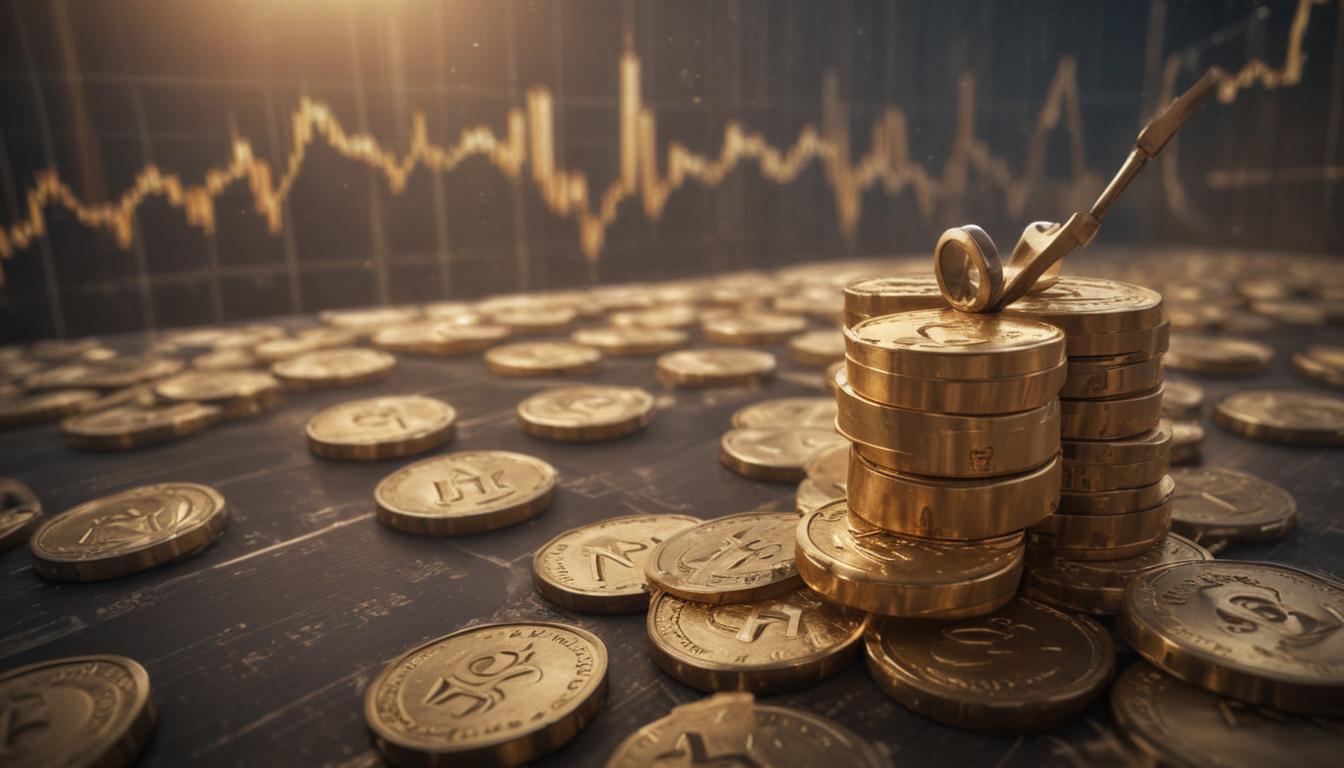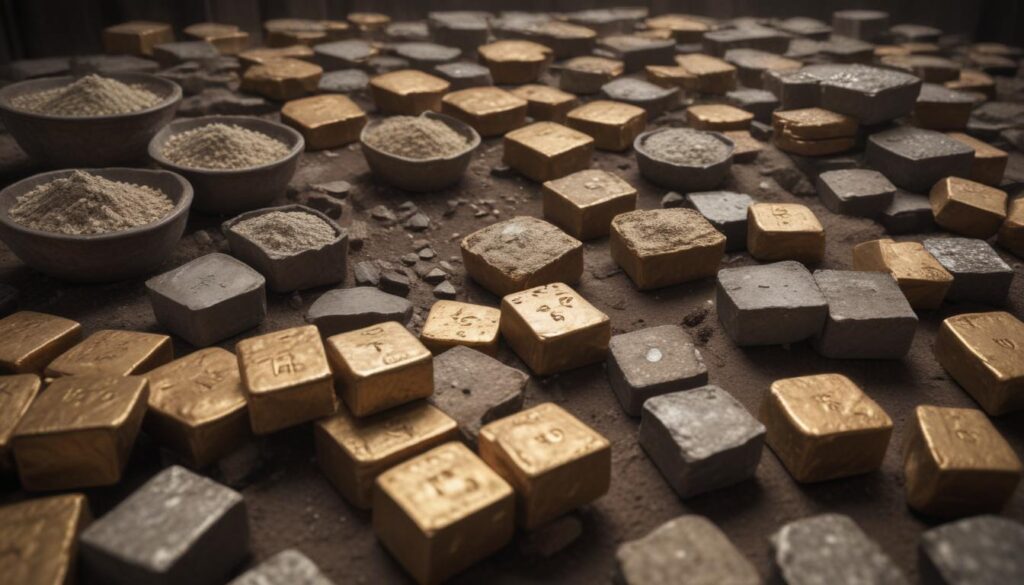Now Reading: Profit From Raw Material Trades
- 01
Profit From Raw Material Trades
Profit From Raw Material Trades

Unlock Profit Potential with Commodities Trading A Beginner’s Guide
Commodities Trading Opportunities in Raw Materials
Are your investments feeling a bit one-dimensional? If you’re tired of watching the same stock market tickers day in and day out, you might feel like you’re missing out on a huge part of the global economy. You hear about oil prices on the news and see gold fluctuate during uncertain times, but the world of raw materials seems complex, risky, and reserved for elite traders. The good news is that it doesn’t have to be. You can access this powerful market and add a tangible, real-world asset class to your portfolio.
This guide will demystify the world of commodities trading. We will break down what commodities are, explore the major types you can invest in, and show you the practical ways you can get started, even as a beginner. By understanding the fundamentals, you can unlock a new avenue for growth, diversify your holdings, and gain a powerful hedge against economic turbulence. It’s time to learn how to invest in the very building blocks of our world.
What Exactly is Commodities Trading
At its core, a commodity is a basic good or raw material used in commerce that is interchangeable with other commodities of the same type. Think of a barrel of crude oil, a bushel of corn, or an ounce of gold. The key is standardization; one barrel of West Texas Intermediate (WTI) crude oil is essentially the same as any other, regardless of who produced it. This uniformity allows these goods to be traded on major exchanges, just like stocks.
Commodities trading, therefore, is the buying and selling of these raw materials. However, for most investors, it isn’t about physically taking delivery of a silo of wheat or a tanker of oil. Instead, it’s about speculating on the future price movements of these goods. Traders aim to profit from shifts in supply and demand, which are influenced by everything from geopolitical events and weather patterns to technological advancements and global economic health. This market represents the most fundamental layer of the economy, the one that everything else is built upon.

Exploring the Major Commodity Categories
The commodities market is vast, but it can be easily understood by breaking it down into a few key categories. Each group has unique drivers and characteristics, offering different types of opportunities for investors.
Energy The Powerhouse of the Global Economy
Energy commodities are the lifeblood of modern civilization. This category is dominated by crude oil and natural gas, which power our vehicles, heat our homes, and fuel our industries. Because of their central role, energy prices are incredibly sensitive to global economic activity and geopolitical tensions. A conflict in the Middle East, a policy decision by OPEC, or a surge in manufacturing in China can cause significant price swings.
Investing in energy can be a direct play on global growth. When economies are expanding, the demand for fuel increases, pushing prices higher. Conversely, during a recession, demand falls. This makes energy commodities a powerful, albeit volatile, barometer for the health of the world economy. For traders, this volatility creates constant opportunities to capitalize on short-term and long-term trends.
Metals Precious and Industrial
The metals category is split into two distinct groups. First are the precious metals, like gold and silver. Gold is a classic safe-haven asset; during times of economic uncertainty, political instability, or rising inflation, investors flock to it as a reliable store of value. It often moves inversely to the stock market, making it an excellent tool for portfolio diversification. Silver shares some of these qualities but also has significant industrial applications in electronics and solar panels.
The second group is industrial metals, such as copper, aluminum, and zinc. These are the building blocks of infrastructure and manufacturing. Copper, often called “Dr. Copper,” is considered a leading indicator of economic health because its demand is directly tied to construction, factory output, and electronics production. A rising copper price often signals a robust and growing economy, while a falling price can hint at a slowdown.
Agriculture The Essentials of Life
Agricultural commodities include everything from grains like wheat and corn to “softs” like coffee, sugar, and cotton. Unlike energy or metals, the supply of these goods is heavily dependent on weather patterns, crop yields, and seasonal cycles. A drought in Brazil can send coffee prices soaring, while a bumper crop of wheat in the United States can push prices down.
This category is also uniquely tied to global demographic trends. As the world’s population continues to grow, so does the fundamental demand for food. This creates a compelling long-term investment thesis. Investing in agriculture allows you to tap into one of the most essential and enduring human needs, offering a different kind of stability and growth potential compared to other asset classes.
How to Start Trading Commodities Today
Gaining exposure to commodities is more accessible than ever before, and you don’t need to be a professional futures trader to participate. For most individual investors, there are a few straightforward methods to add raw materials to your portfolio.
One of the most popular methods is through Exchange-Traded Funds (ETFs) and Exchange-Traded Notes (ETNs). These financial products trade on the stock market just like any company stock. You can buy a gold ETF (like GLD) to track the price of gold, an oil ETF (like USO) to track oil, or even a broad-based commodity ETF that holds a basket of different raw materials. This approach offers instant diversification and liquidity without the complexity and leverage of the futures market.
Another effective strategy is to invest in the stocks of commodity-producing companies. For example, instead of buying oil directly, you could buy shares in a major oil and gas corporation like ExxonMobil or Chevron. Instead of trading copper futures, you could invest in a mining giant like Freeport-McMoRan. This approach gives you indirect exposure to commodity prices, as the profitability of these companies is closely tied to the value of the resources they extract and sell. Whichever path you choose, the key is to start small, do your research, and understand that commodities can be a powerful component of a well-rounded and resilient investment strategy.



































